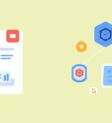
Integrating webhooks with AI agents is transforming the way companies build dynamic, real-time automation into their workflows. This guide will break down the essentials of using webhooks with AI agents, their benefits, security best practices, common troubleshooting tips, and how to scale your architecture for future growth. Discover how event-driven data flow can supercharge AI-powered automation across industries.
What Are Webhooks and How Do They Work with AI Agents?
Webhooks are automated notifications sent between applications when a specified event occurs. Unlike traditional APIs—which require repetitive polling to check for updates—webhooks operate on an event-driven basis. When a trigger (like a user registration or file upload) fires, the webhook delivers real-time data directly to another system via an HTTP request.
This event-driven model is especially powerful in the context of webhooks with AI agents. By integrating webhooks, AI agents receive immediate updates about external events, eliminating latency and enabling efficient, automated reactions. For example, an AI agent monitoring customer support can instantly start processing a new support ticket as soon as a webhook notification arrives. This real-time connectivity helps AI agents become more proactive and responsive, significantly enhancing automated workflow performance. If you’re interested in foundational concepts for deploying custom AI solutions, don’t miss the Setting Up Custom AI Agents with TheAgentBot guide.
Benefits of Integrating Webhooks with AI Agents
Adding webhook functionality to AI agents unlocks a host of operational and strategic benefits:
- Instantaneous Communication: Webhooks facilitate real-time event delivery, enabling AI agents to react immediately. Take a helpdesk bot: it can instantly acknowledge new tickets and accelerate customer service.
- Seamless Integration: Webhooks act as bridges between AI systems and third-party tools such as CRMs, databases, or IoT devices. This means zero manual polling or data entry—for example, sales AI bots can update CRM leads automatically when a form is submitted.
- Workflow Automation: With webhook triggers, AI agents can automate repetitive tasks such as moderating user content or processing payments at the moment an event occurs.
- Scalability & Flexibility: Event-driven webhooks keep workflows modular. Your AI agents can efficiently manage diverse event volumes and connect with distributed systems in the cloud with no performance bottlenecks.
- Personalized User Experiences: AI agents can offer real-time, contextual responses, like recommending products as inventory changes through webhook feeds.
Practical applications extend far beyond theory:
- E-Commerce: Keep customers in the loop with AI-powered order updates and personalized offers, triggered by webhook events.
- Healthcare: Notify AI health agents of urgent lab results for immediate patient action.
- DevOps: Launch AI diagnostics and automated incident responses as soon as your monitoring system flags an anomaly.
Webhooks with AI agents streamline the flow of information, deliver faster reactions, and support intelligent automation across a spectrum of industries. For industry-specific examples and inspiration, check out our Best Use Cases for TheAgentBot in 2025 article.
How to Set Up Webhooks with Your AI Agent: A Step-by-Step Guide
Integrating webhooks with your AI agent may sound complex, but following a structured process ensures a smooth deployment. Here’s how to get started:
- Choose Your Webhook Service:
Select the service or platform where your webhook will live. Options include Zapier, custom-built endpoints (e.g., using Node.js/Express), or built-in webhook tools in platforms like Slack, GitHub, or TheAgentBot.
- Create a Webhook Endpoint:
Set up a URL in your application to accept incoming POST requests (such as
/api/webhook). Ensure your system can parse incoming JSON or form data. Here’s a Node.js/Express sample:app.post('/api/webhook', (req, res) => { // Handle the webhook payload here res.status(200).send('Received'); }); - Configure the Webhook on Your AI Platform:
In your AI agent settings, input your endpoint URL and specify which events will trigger it (like message received or completed actions). Many platforms will require you to provide authentication tokens or secret keys—store these securely.
- Define Payload Structure:
Review the expected webhook payloads using your AI platform’s documentation. Map out essential fields (e.g., user ID, message content) to ensure your webhook handler understands the incoming format.
- Validate and Handle Events:
Implement security checks in your endpoint (such as verifying signatures or secret tokens). Write logic to process events, whether that’s logging, alerting, or triggering further automation.
- Test the Integration:
Most platforms offer test webhook capabilities. Simulate events and verify your endpoint receives and processes them as expected—log output for confirmation.
- Go Live and Monitor:
After successful testing, enable your webhook in production. Monitor the endpoint for errors or latency and set up alerts for failed deliveries.
Applying these steps helps you achieve a robust connection between your AI agent and your chosen external systems for seamless, real-time data flow and automation. For a deeper dive into initial setup, read our Getting Started with TheAgentBot: A Beginner’s Guide.
Security Best Practices for Webhooks with AI Agents
Ensuring the safety of your webhook–AI agent integration is crucial to protect both system integrity and user data. Here are the key security considerations:
- Authentication: Use secure tokens or API keys to ensure only trusted sources can trigger your webhook endpoint. Store credentials in environment variables and rotate keys regularly.
- Request Validation: Validate every webhook request by checking for expected headers and verifying payload signatures (using HMAC, for example). Confirm the request originates from the trusted sender.
- Rate Limiting: Implement limits to prevent abuse, flooding, or denial-of-service attacks on your webhook endpoint.
- Encryption: Always use HTTPS to encrypt data in transit, preventing interception or tampering.
- Logging and Monitoring: Log all event and error activity. Set up monitoring to quickly identify anomalous activity or repeated failures.
- Least Privilege Principle: Restrict the permissions of your AI agents and webhook endpoints to grant only the minimal access required for tasks.
Following these principles creates a strong security framework for managing event-driven integrations between AI agents and external systems. For more on agent setup and security, review our Setting Up Custom AI Agents with TheAgentBot.
Troubleshooting Common Issues When Integrating Webhooks with AI Agents
While the promise of webhooks with AI agents is great, technical challenges can arise. Here’s a look at frequent issues and how to troubleshoot them:
- Authentication Errors: Webhook requests returning “unauthorized” usually signal outdated or misconfigured credentials. Confirm secret keys or tokens are set correctly and have not expired. Use environment variables to safeguard secrets.
- Payload Format Problems: Mismatches between the event payload sent and the AI agent’s expected schema can break integration. Validate payloads with tools like JSON schema validators to ensure compliance.
- Delivery Failures & Timeouts: Slow or unavailable endpoints cause webhook delivery to fail. Make sure your AI agent endpoint is reliable, can handle parallel requests, and responds within timeouts. Implement retry logic with exponential backoff to handle temporary issues.
- Duplicate Events: Some webhook senders retry failed events, triggering duplicate actions. Build idempotency into your AI workflows by tracking processed event IDs and ignoring repeats.
- Security Vulnerabilities: Public endpoints attract risk. Always check request authenticity, restrict source IP addresses where possible, and use HTTPS everywhere.
- Silent Failures & Poor Logging: Without thorough logs, issues go undetected. Log all incoming events and errors, and set up alerts for repeated failures.
By proactively addressing these concerns, you enhance the reliability and efficiency of your AI agent–webhook connections. If you’re building multi-task AI agents that must handle complex events, visit our Step-by-Step Guide to Building a Multi-Task AI Agent for advanced integration tips.
Scaling Webhooks with AI Agents: Architecture and Performance
As your business expands, scaling webhooks with AI agents becomes essential for maintaining performance and reliability. Consider these strategies for robust and future-proof automations:
- Queueing and Buffering: Message queues (like RabbitMQ or AWS SQS) can buffer webhook calls, ensuring no events are lost under heavy load and that your AI agents can process messages at a steady pace.
- Error Handling & Retry Logic: Webhook deliveries can fail for various reasons; implement retry mechanisms with exponential backoff at both the sender and receiver.
- Security as You Scale: As integrations multiply, use consistent signature verification and encryption across all endpoints. Monitor for new vulnerabilities as your attack surface grows.
- Batch Processing: Not every event requires instant action; where possible, batch webhook payloads to optimize resource use and reduce API calls.
- Analytics and Monitoring: Track webhook and agent performance—delivery rates, average latencies, and error trends—to pinpoint bottlenecks and guide further optimizations.
- Modularity and Adaptability: Design integration code to be modular so you can add, update, or replace AI agent components and webhook endpoints as new APIs or business needs evolve.
These practices not only help manage increased event volumes, but also future-proof your automation architecture as AI capabilities and webhook standards advance. Read about more integration strategies in TheAgentBot Integrations: Tools You Can Connect Today.
Future Opportunities: Webhooks, AI Agents, and the Road Ahead
The synergy of webhooks with AI agents is enhancing business automation in profound ways—across customer service, e-commerce, DevOps, and beyond. Developers and business leaders integrating these technologies can unlock smarter, more responsive workflows that adapt in real time to critical events.
Looking forward, the further evolution of AI agents—think real-time contextual assistants, adaptive workflows, and advanced generative models—will continue to expand the scope and value of these integrations. To stay ahead, prioritize modular architecture, track new API standards, and keep your security practices current.
Whether you’re just starting with simple automations or orchestrating large-scale, intelligent systems, mastering webhooks with AI agents will strengthen your digital transformation journey. For more advanced guides, industry trends, and practical setup tips, explore our collection of top AI agent platform features and resources at TheAgentBot.
Embrace webhooks and event-driven AI: you’ll drive innovation today, and stay future proof for tomorrow’s automation challenges.




